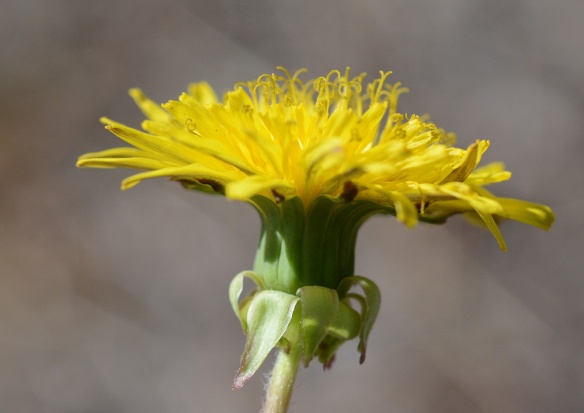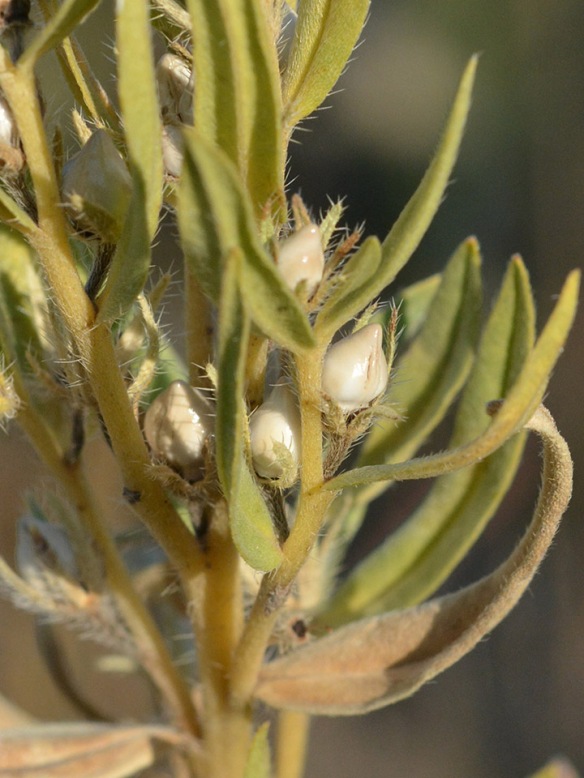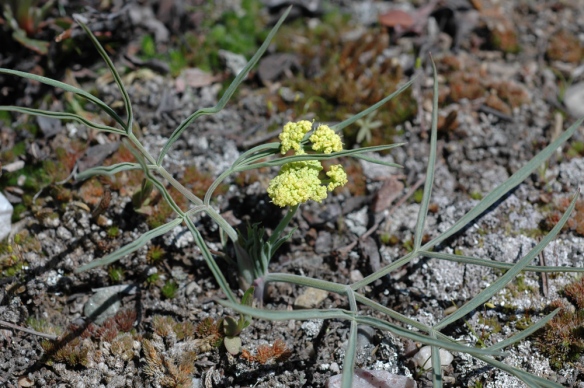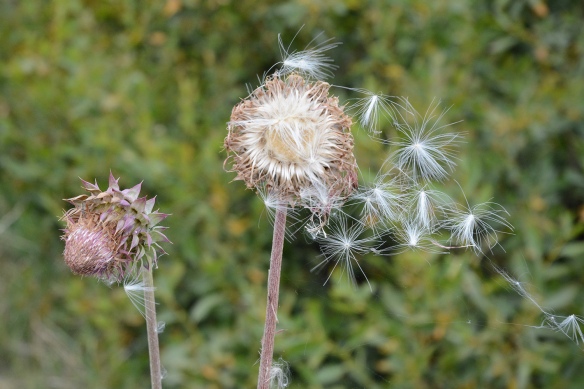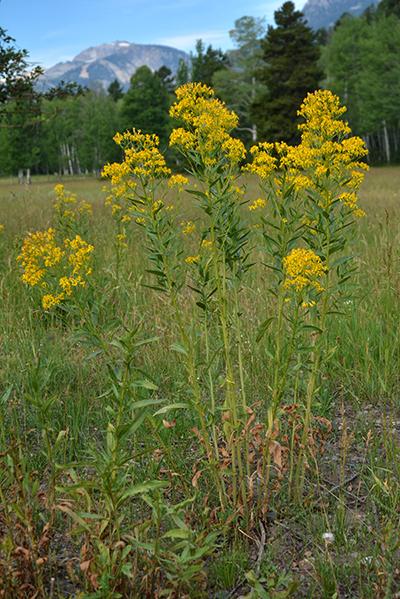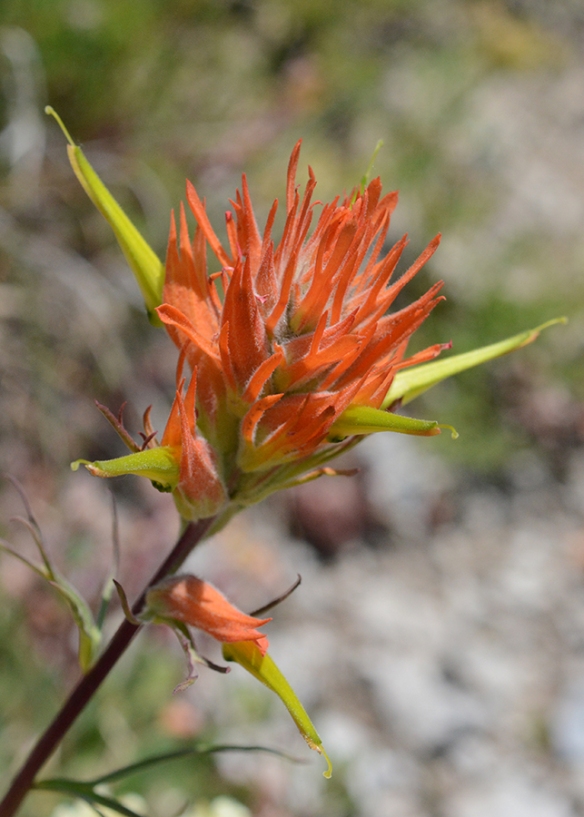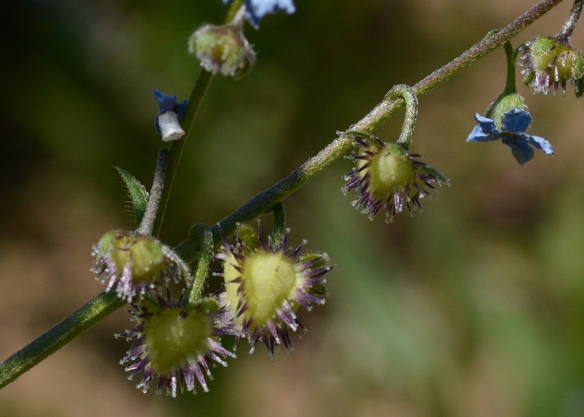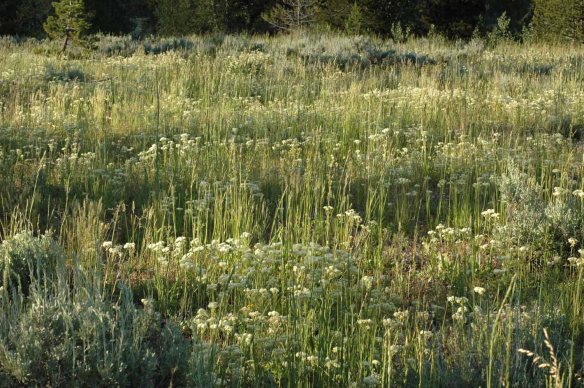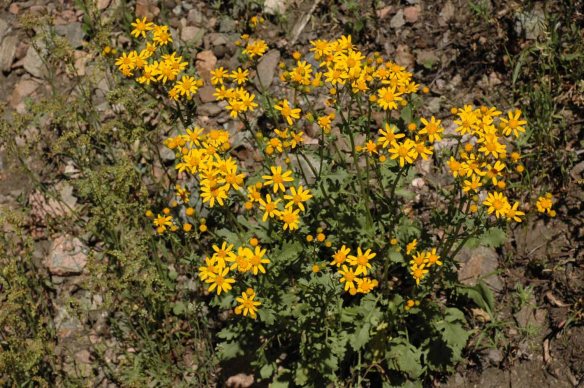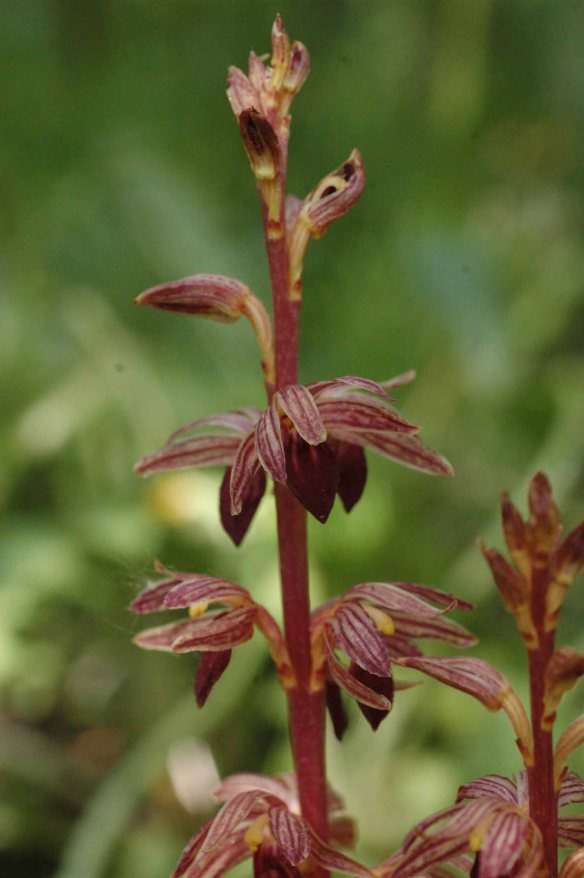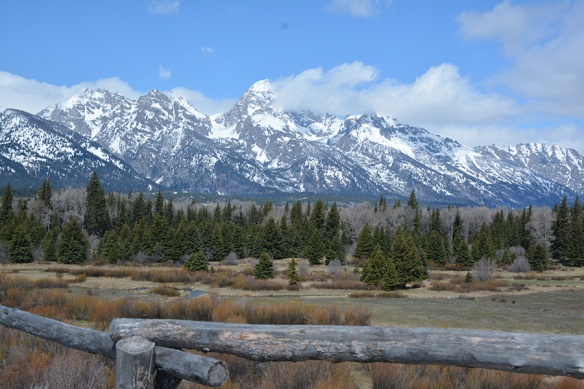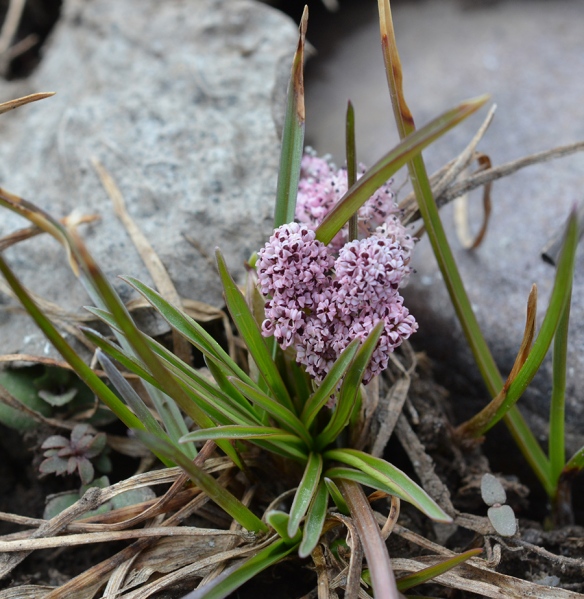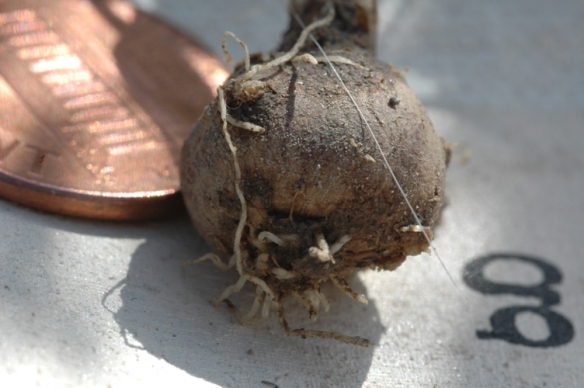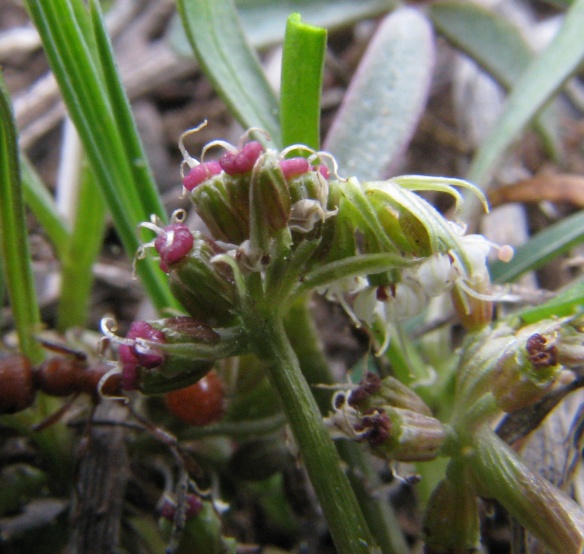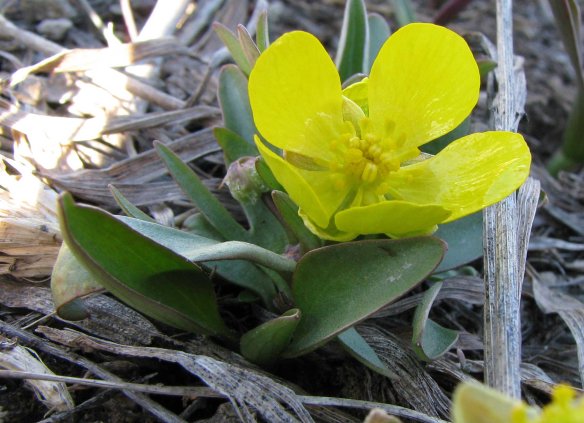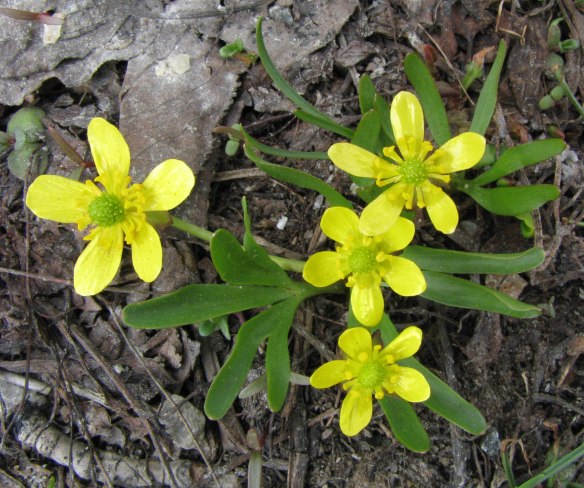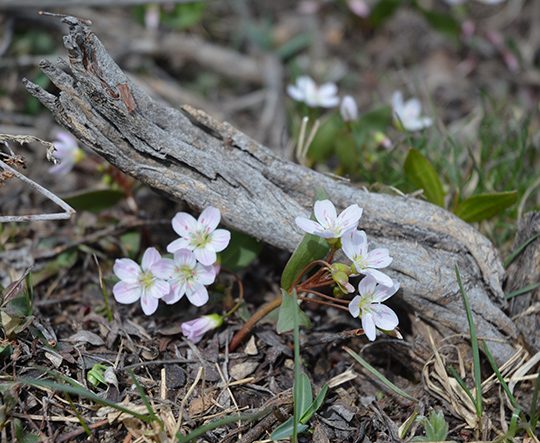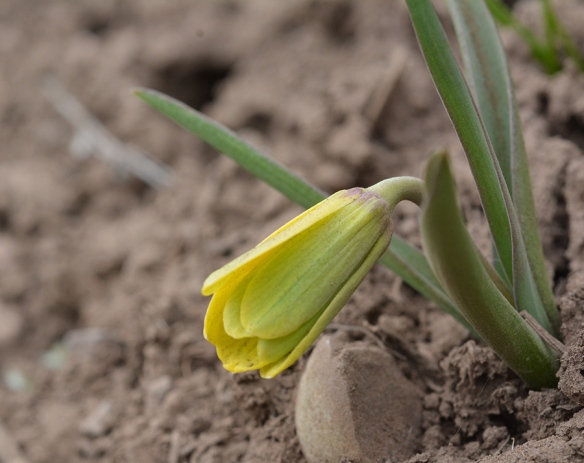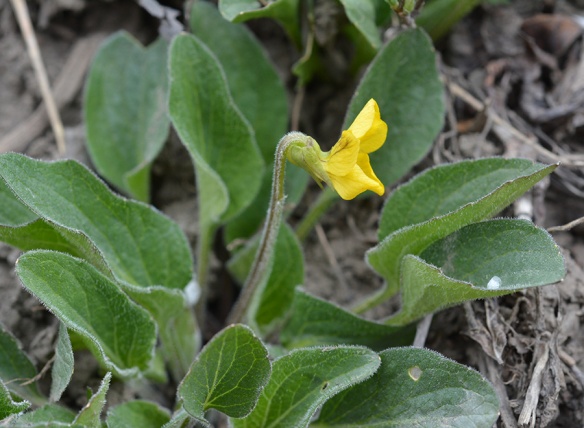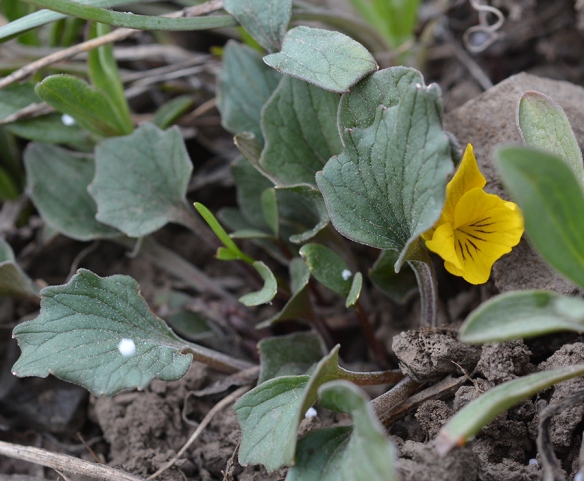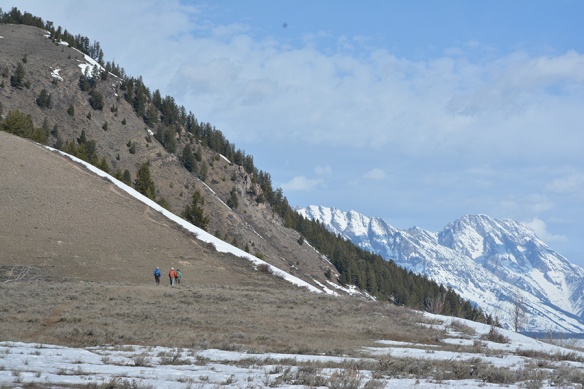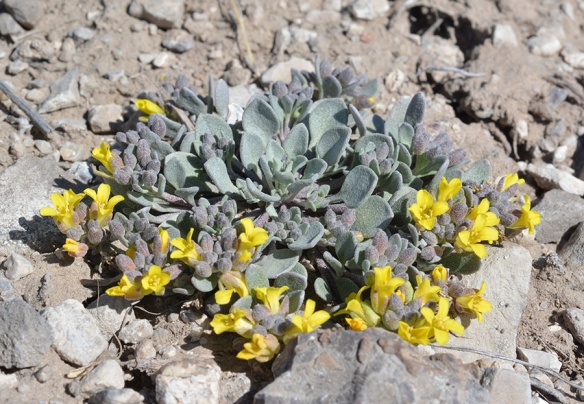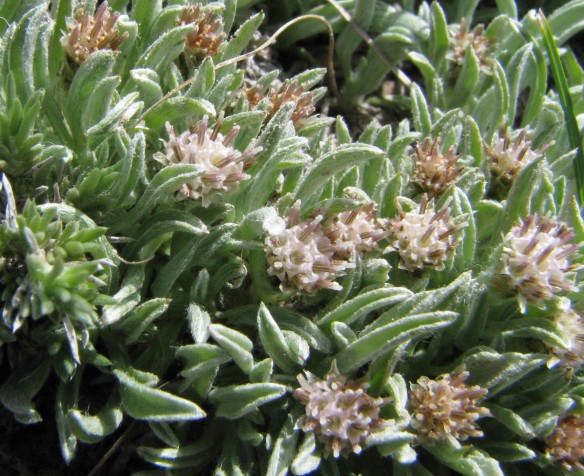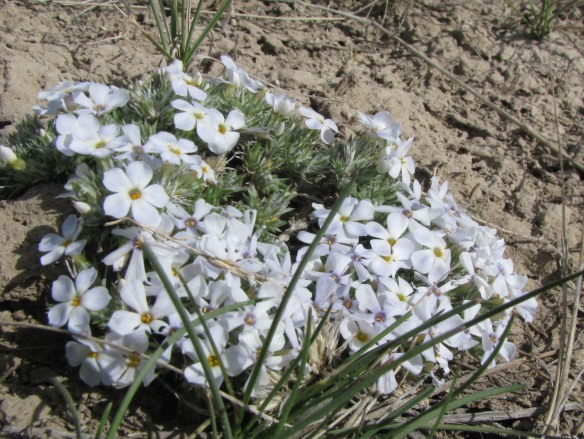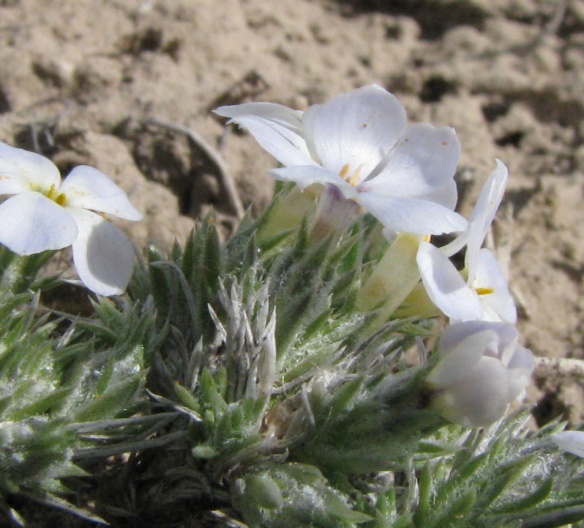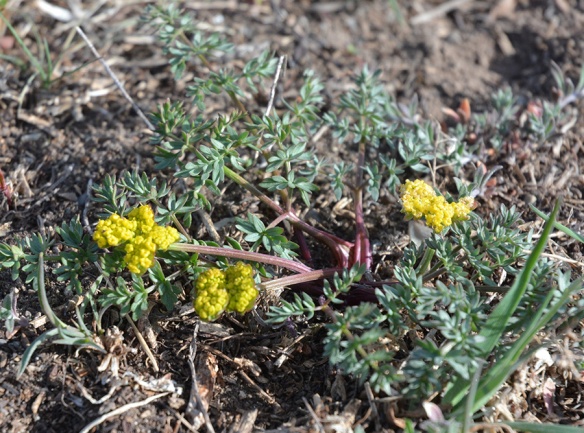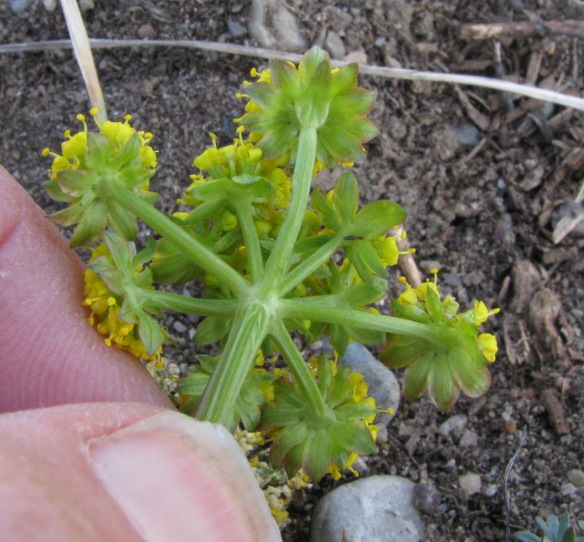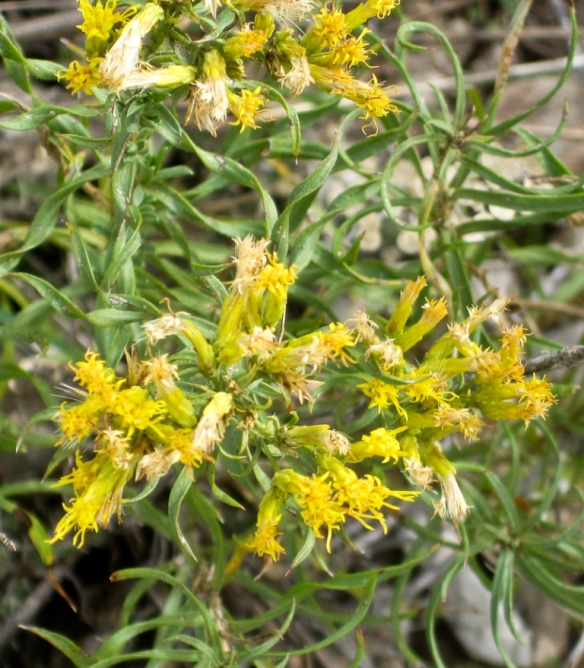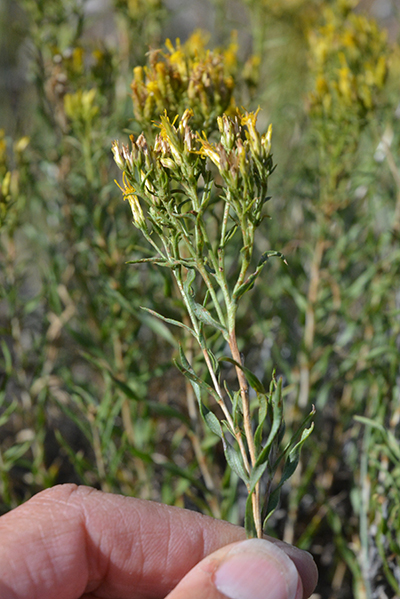 The number of fresh flowers is overwhelming hiking up Old Pass Road, Ski Lake, Munger Mountain and other trails with aspen groves and coniferous forests intermingle with meadows. The range of sun and shade, moisture and soils provides opportunities for a diversity of wildflowers to find their niche. Some plants are generalists, others are specific in their growing needs. All have evolved pollination techniques which are fascinating to observe and underground connections which we can only imagine.
The number of fresh flowers is overwhelming hiking up Old Pass Road, Ski Lake, Munger Mountain and other trails with aspen groves and coniferous forests intermingle with meadows. The range of sun and shade, moisture and soils provides opportunities for a diversity of wildflowers to find their niche. Some plants are generalists, others are specific in their growing needs. All have evolved pollination techniques which are fascinating to observe and underground connections which we can only imagine.
Connections above and below ground:

Sticky Geranium – Geranium viscosissimum – is wide open to pollinators. The nectar guides lead to a central column of anthers and pistil.
Sticky Geranium – Geranium viscosissimum – is common everywhere right now. The saucer-shaped flowers formed by 5 petals are wide open to a variety of pollinators. Look closely at the nectar guides that lead to a central column comprised 0f anthers and stigmas. These male and female parts mature at different times to avoid self-pollination. Petal color varies from almost blue to deep pink, to almost white. All parts of the plant have sticky “glandular hairs” which present a gooey forest defense for tiny crawling predators.

Richardson’s Geranium – Geranium richardsonii – looks very similar to Sticky Geranium but is white and grows in moist sites.
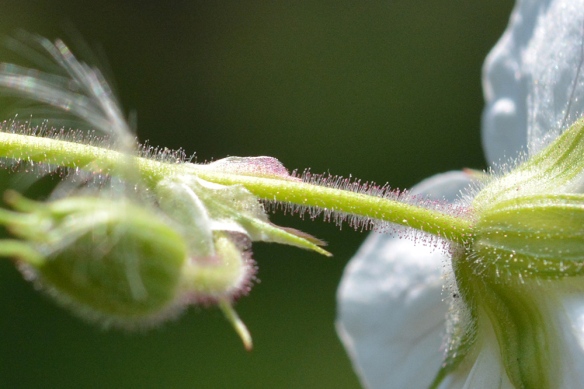
Both species have sticky hairs that serve as a gooey forest of defense against tiny invaders. The hairs of Richardson’s Geranium are purple-tipped.
Lupines are lurking…quite obviously…under conifer trees—lodgepole pines at Signal Mountain, Douglas firs along Ski Lake Trail. The “palmately” divided leaves and the pea-like flowers (later pods) are two definitive ID features for lupines, overall.

Silvery Lupine – Lupinus argenteus – is found most frequently in forests vs. Silky Lupines are found commonly in sageflats. Lupines can grow in, and even improve, low nutrient soils.

Silvery Lupine flowers look like miniature garden pea flowers. The banner which folds back at the top is smooth. The two side petals–the wings–hide the two “keel” petals inside. Within are 10 anthers and one pistil. The pistil will become a pod.
Silvery Lupine flowers have smooth backs to their banners. The banners are held at a <45 degree angle to the wings and keel. Insects land on the “wings”, and while pushing into the center of the flower for pollen, the “keel” drops, revealing anthers which press pollen onto the insect’s belly. On the next flower visit, the stigma may tap pollen off the bee’s belly. Seeds will form inside a growing pod…like peas in a pod.
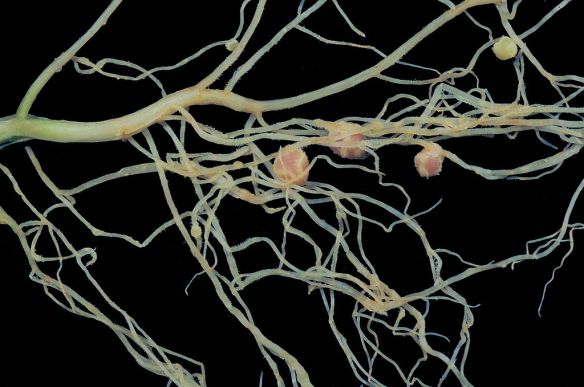
Root nodules form in legumes, including lupines. They harbor bacteria which fix nitrogen from the air, passing it on to plants for growth. Photo: wiki commons
All plants need nitrogen. Gardeners add nitrogen to flower beds and lawns. For centuries, farmers have grown alfalfa, clover, beans, and other legumes to improve conditions for crops. Lupines, like many legumes, form nodules in their roots to protect nitrogen-fixing bacteria. The bacteria have a safe haven to “fix” nitrogen from the air (N2), which is plentiful in soil pores, and convert it into a form usable and essential for plant growth (NH3). Dying lupines, in turn, add nitrogen to the soil in a form that all other plants can use. Thus, lupines are beneficial to our forests and sagebrush lands.

The 3-4′ tall stalks of Fernleaf Lousewort or Wood Betony – Pedicularis bracteosa – is growing in shady aspen groves.
Fernleaf Lousewort – Pedicularis bracteosa – stands up tall in aspen groves and shady meadows. The leaves are large and finely dissected. Pale yellow flowers spiral up 3’ stalks.

Flowers of louseworts are designed to fit specialized pollinators. Here you can see the stigma poised to tap pollen off the back of a visiting bee as the bee searches for nectar deep within the flower.
Louseworts have a variety of pollination strategies: the flowers of each species have evolved to fit specific pollinators. The lower petals are fused to serve as landing pads, and the upper petals shield the male anthers and female stigma. When the right-sized bumblebee comes in for a landing, the anthers will deposit pollen. On another visit, the stigma will stick out and relieve the bee of its burden.
Another point of interest: Fernleaf Lousewort parasitizes Engelmann Spruce for certain compounds: pinidinol, specifically. Why? Who knows?

Fern-leaf Lovage – Ligusticum filicinum – is beginning to flower. Note the large delicate leaves and umbels of white flowers.
Another tall wildflower bearing lacy large leaves is Fern-leaf Lovage – Ligusticum filicinum, of the Parsley Family. It is beginning to bloom in aspens groves near Munger Mountain and in meadows by Two-Ocean Lake. Umbels (remember umbrella ribs) of tiny white flowers are spreading high and wide.
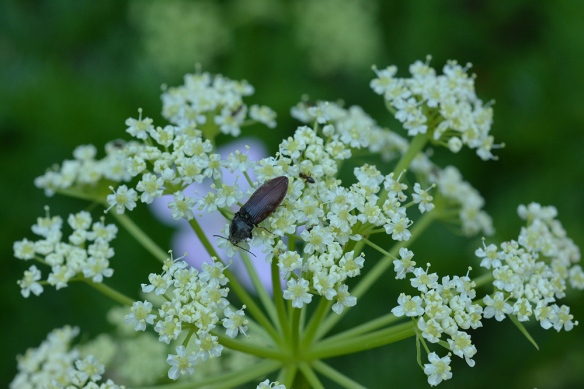
Many insects step from flower to flower in Fern-leaf Lovage, which collectively give perches and treats to all sizes of flies, beetles, and bees. Look for shiny rings of nectaries below the two stigmas–the reward the insects are looking for.
The highly pungent and flavored root of this plant is called Osha in herbal medicine and was used by many groups of Native Americans for infections.

Osha root is very pungent and powerful. It has been used for generations of native peoples for medicine.

Westerm Sweetroot – Osmorhiza occidentalis – has tiny yellow-green flowers in umbels, and a divided leaf.
Also in the Parsley Family, Western Sweetroot – Osmorhiza occidentalis – has similar features to Ligusticum. The flowers are in umbels and the leaves are divided—looking a bit like parsley leaves.

Sticky Geranium – Geranium viscosissimum – is wide open to pollinators. The nectar guides lead to a central column of anthers and pistil.
Already, plants are forming elongated ½” fruits which have a licorice flavor. Plants create chemicals for defense (toxins) or attractants (perfumes). While many Parsley Family species are tasty and beneficial to us, others are deadly, such as Water Hemlock – Circuta maculata.
Two Opposite Pollination Strategies:
Two members of the Buttercup Family are flowering now in forests. One is spectacular, the other easily overlooked. These two family members have evolved very different strategies for survival.

Western Meadowrue – Thalictrum occidentale – is a delicate looking plant in shady forests. This plant is in full (male) flower.
Western Meadowrue – Thalictrum occidentale – is wind pollinated. As with many wind-pollinated plants, the flowers are almost invisible to us. Wind doesn’t see, so the plant does not provide a showy display, as it would if it were insect pollinated. Male pollen grains need to land on female pistils to make fruits and seeds. Preferably the pollen comes from a genetically different plant for long-term diversity and adaptation of the species.

Dangling male flowers of Western Meadowrue scatter pollen grains upon the wind.

Pink stigmas of female flowers of Western Meadowrue – stretch wide to catch pollen grains.

Fruits of Western Meadowrue.
To assure cross-pollination, in this species male flowers are on separate plants from the females. Look for many anthers dangling out in the wind. Nearby, hopefully, are female plants with flowers with stigmas reaching wide to catch the wind-scattered “balls” of pollen. With luck, and it is luck!—the male pollen is caught by feathery female stigmas and fruits and seeds can form.
Surprisingly found in the same family, the very showy Colorado Columbine – Aquilegia coerulea – is found in moist shade where its white petals and sepals stand out.

Columbines have five flaring white sepals, 5 petals that form “spurs” with nectar at the bulbous ends, many anthers, and 5 pistils. This is Colorado Columbine – Aquilegia coerulea.
Vashti Sphinx Moths (left image – from Wikipedia Commons) are specialist, nectar-seeking pollinators of Colorado Columbines. Nectar is held deep in the petal spurs, which only this species can reach: the moth hovers and uncurls and extends its proboscis inside to the sweet energy reward at the end. Research has shown that Sphinx vashti visits columbine populations with longer spurs than populations visited by White-lined Sphinx moths or Hummingbird Moths – Hyles lineata (right image – from Wikipedia). Furthermore, blue variations of Colorado columbine with shorter spurs are associated with bumble bees seeking pollen as well as nectar. Both flowers and pollinators are specialized with in the same plant species.

Mountain Snowberry – Symphiocarpus oreophilus – is the host plant for caterpillars of Vashti Sphinx Moths which pollinate Colorado Columbines. The shrub is in flower now.
A Big Year for Tiny Orchids

Many people have reported seeing Coralroot and Calypso Orchids this spring. A few have come upon Twayblades. Orchids comprise the largest family of plants in the world. Researchers are exploring how specialized pollinators and mychorrizal relationships may be driving species diversification, but overall little is known about these plants, including the species here in Jackson.
All Coralroots – Corallorhiza spp. – are dependent on association with fungi for survival, as they do not have any chlorophyll. Their knobly, twisted rhizomes (underground stems) are connected to mycelia threads of gilled Russula mushrooms, which are in turn connected to nearby trees that provide carbohydrates. Coralroot stems are reddish to yellow (never green) and do not have leaves. Flowers are small with variable markings, depending on species and varieties.

Spotted Coralroot – Corallorhiza maculata – is variable in its decoration. However 2 lobes on either side of the base of the lowest petal (lip) and a bump (spur) under the throat of flower help in ID. All-yellow forms with white lips are also present–some say these are albino forms. None have chlorophyll.
Very little is known about coralroot pollinators—maybe bees?—which visit the flowers, expecting a “reward” of nectar or pollen. In any case, the pollinators leave duped and carry only a load of a pollinia (sac with thousands of pollen grains) which it cannot reach.
If the pollinator is fooled again, the next flower will receive the pollinia and can produce thousands of very fine, dust like seeds. Spread by wind, the tiny seeds depend on the right species of fungus to be in the soil where they land. It’s amazing to see any orchids at all!

Striped Coralroot – Corallorhiza striata. The striped petals direct hapless pollinators down a dead end. In exploring for a reward of nectar, the pollinator presses upon the yellow wad of pollinia on the end of the “column”, which sticks to its back. However, there is no nectar! If it is fooled again, it visits another flower where the pollinia sticks to a perfectly sized stigma.
Two other Coralroots: C. mertensiana and C. wisteriana can be discovered in conifer forests as well. Details of differences include design of stripes and spots, length and shape of petals, and bumps on the inferior ovaries. Insects can tell the difference in species, even if it hard for us to do so.
Calypso Orchid or Fairy Slipper – Calypso bulbosa – is one of a kind. There are no other species in the genus. Young queen bumblebees are attracted to the fragrant, elegant flowers. However, they do not receive any reward for their time and soon learn (yes, insects learn) not to visit this species again. However, if a queen does visit another flower, she delivers a wad of pollen which can stimulate thousands of seeds in the single fruit capsule. The plant has been pollinated without its expending any extra resources on nectar.

Calypso Orchid – Calypso bulbosa – is alluring to inexperienced bumblebee queens. However, after a visit or two, they learn there is no reward for them and cease to visit.
The paired green leaves of twayblades (Neottia/Listera spp.) indicate that this genus can manufacture its own food. Four species of twayblades are listed in Teton County. These photos are of Western Twayblade – now called Neotiia banksiana, formerly Listera caurina, It is found in the northwest but is listed only in Teton County for Wyoming.
While all our wildflowers deserve protection, please never pick an orchid…their existence is precarious enough.
While hiking, ponder the remarkable life passing by your boots. Take a moment to look closely at the unfurling flowers and developing fruits and seeds. What pollinators are flying and crawling about? What micro-organisms are living in the soil that provide us with such colorful displays above? Enjoy the questions, even if we don’t know the answers, yet.

Aspen grove along Cole Creek Trail, Bridger Teton National Forest.
Frances Clark, Wilson, WY
June 28, 2016
P.S. Watch out for Stinging Nettles – Urtica dioica – along the trail. Plants can be 4′ tall and have opposite, egg-shaped, 3-4″ toothed leaves. Flowers are tiny and male and females are on different plants. Transparent needle-like hairs on stem and leaves are filled with liquid. When brushed, the tip of the hair breaks open and ejects a liquid that stings like a red ant bite. Ouch!

















